Short-term dietary changes can result in mucosal and systemic immune depression
- PMID: 37580603
- PMCID: PMC10457203
- DOI: 10.1038/s41590-023-01587-x
Short-term dietary changes can result in mucosal and systemic immune depression
Abstract
Omnivorous animals, including mice and humans, tend to prefer energy-dense nutrients rich in fat over plant-based diets, especially for short periods of time, but the health consequences of this short-term consumption of energy-dense nutrients are unclear. Here, we show that short-term reiterative switching to 'feast diets', mimicking our social eating behavior, breaches the potential buffering effect of the intestinal microbiota and reorganizes the immunological architecture of mucosa-associated lymphoid tissues. The first dietary switch was sufficient to induce transient mucosal immune depression and suppress systemic immunity, leading to higher susceptibility to Salmonella enterica serovar Typhimurium and Listeria monocytogenes infections. The ability to respond to antigenic challenges with a model antigen was also impaired. These observations could be explained by a reduction of CD4+ T cell metabolic fitness and cytokine production due to impaired mTOR activity in response to reduced microbial provision of fiber metabolites. Reintroducing dietary fiber rewired T cell metabolism and restored mucosal and systemic CD4+ T cell functions and immunity. Finally, dietary intervention with human volunteers confirmed the effect of short-term dietary switches on human CD4+ T cell functionality. Therefore, short-term nutritional changes cause a transient depression of mucosal and systemic immunity, creating a window of opportunity for pathogenic infection.
© 2023. The Author(s).
Conflict of interest statement
N.G. declares financial support from F. Hoffmann-La Roche. This is outside the submitted work. The remaining authors declare no competing interests.
Figures
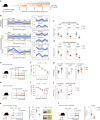


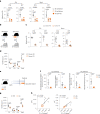
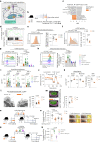
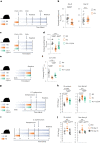


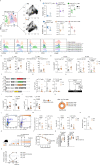





Comment in
-
Intermittent Feasting: Dampening Our Gut Immune Spirits.Gastroenterology. 2024 Jan;166(1):212. doi: 10.1053/j.gastro.2023.09.028. Epub 2023 Sep 22. Gastroenterology. 2024. PMID: 37741420 No abstract available.
References
-
- Manabe, Y., Matsumura, S. & Fushiki, T. in Fat Detection: Taste, Texture, and Post Ingestive Effects (eds Montmayeur, J.-P. & le Coutre, J.) Ch. 10 (CRC Press/Taylor & Francis, 2010). - PubMed
-
- Drewnowski, A. & Almiron-Roig, E. in Fat Detection: Taste, Texture, and Post Ingestive Effects (eds Montmayeur, J.-P. & le Coutre, J.) Ch. 11 (CRC Press/Taylor & Francis, 2010). - PubMed
Publication types
MeSH terms
LinkOut - more resources
Full Text Sources
Molecular Biology Databases
Research Materials
Miscellaneous

